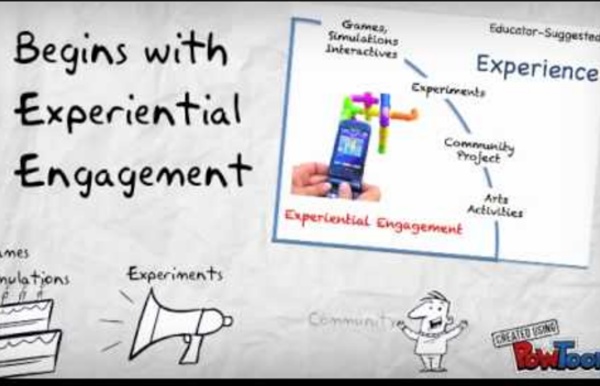



Flipped Classroom: The Full Picture The Flipped Classroom - FacultyRow Faculty Row The Official Home Of America's Top Faculty™ The Flipped Classroom With the teacher at the front and seats in rows, the classroom has barely changed in the last century. But, we now know that there's no "one size fits all" a... Rating: Share Twitter Facebook Views: 100 Get Embed Code Tags: animation, classroom, faculty, flipped, professors, More… Related Videos Comment You need to be a member of Faculty Row to add comments! Join Faculty Row Welcome toFaculty Row Quick Sign Upor Sign In Or sign in with: NYTimes Higher Ed (CLICK) Badge Get Badge Top Content Chair/Reader/Senior Lecturer in Educational Leadership and Management - (Associate Professor) Professor and Executive Director Research Professor and Executive Director Professor and Head of the Claude Littner Business School Chair of Neurosurgery, Head of the Division of Neurosurgery and Honorary Consultant Neurosurgeon Professor and Head, School of Arts and Social Sciences Associate Professor and Director of the MA Social Work (55126-044) More…
Flipped Classroom Higher Education 4 Tips for Flipped Learning As interest in flipped learning continues to grow, so does its adoption among the educational rank and file. By moving entry-level information outside the classroom -- typically (but not exclusively) through self-paced, scored videos -- teachers can reframe learning so that students spend more instructional time engaged in deeper discussions, hands-on applications and project-based learning. With a focus on more direct contact between teachers and students, greater application of basic concepts, and increased collaboration between learners, flipped learning provides yet another outlet for 21st century teaching. No doubt, making this kind of change can be intimidating. Before teachers flip out, here are four tips to make the transition smoother -- and more impactful. 1. Making a dazzling video without first determining its instructional value is like putting the cart before the horse. Once students understand the entry-level information, what will they be able to do with it? 2. 3. 4.
Flipped Classroom: The Full Picture for Higher Education The Flipped Classroom, as most know, has become quite the buzz in education. Its use in higher education has been given a lot of press recently. The purpose of this post is to: Provide background for this model of learning with a focus on its use in higher education.Identify some problems with its use and implementation that if not addressed, could become just a fading fad.Propose a model for implementation based on an experiential cycle of learning model. Background About the Flipped Classroom This first section provides information from various articles that describe the flipped classroom, and how it is being discussed and used in educational settings. In its simplest terms, the flipped classroom is about viewing and/or listening to lectures during one’s own time which frees up face-to-face class time for experiential exercises, group discussion, and question and answer sessions. It’s called “the flipped classroom.” Sal Khan, of the Khan Academy, states: Personal Experiences Basic Tenets
Five-Minute Film Festival: Flipped Classrooms I really enjoyed Mary Beth Hertz's excellent blog published earlier this week, "The Flipped Classroom: Pro and Con" -- one of the most concise and balanced views I've read on the buzz-wordy concept of flipping the classroom. Advocates say that "flipped classrooms" help overburdened teachers differentiate their instruction to reach more learners, provide an avenue into more hands-on and student-driven learning during classtime, and shift the teacher's role from "sage on the stage" to learning coach and facilitator. Critics say it's just a fad, relies too heavily on rote instruction, and doesn't go far enough in making the needed changes for teaching and learning reform. I've rounded up this list of videos so you can learn more about the challenges and benefits of flipped classrooms. Video Playlist: Flipping the Classroom Keep watching the player below to see the entire playlist, or view this playlist on YouTube. More Flipped Class Resources Flipping the Classroom Guides and PD
Flipped Classroom Full Picture: An Example Lesson The flipped classroom, as it is currently being described and publicized, is simply recording the didactic content information via videos, having students view these as homework, and then using class time to further discuss these ideas. Harvard Professor Chris Dede stated in his Global Education 2011 keynote in response to a question directed about the flipped classroom . . . I think that the flipped classroom is an interesting idea if you want to do learning that is largely based on presentation. You use presentation outside of the classroom. Then you do your understanding of the presentation and further steps from the presentation inside the classroom. As I describe in The Flipped Classroom: The Full Picture, I believe, as Chris Dede does, that the problem with the flipped classroom is that the major focus is on the didactic presentation of information, that it is still at the center of the learning experience. The following lesson describes a type of flipped classroom. Part One
The Flipped Classroom | Quiet Working Mouse No. 79 Long sleeve structured blazer in baby blue. Stand collar. Open front with single post stud closure at waistband. Lightly padded shoulders. Fully lined. Tonal stitching.